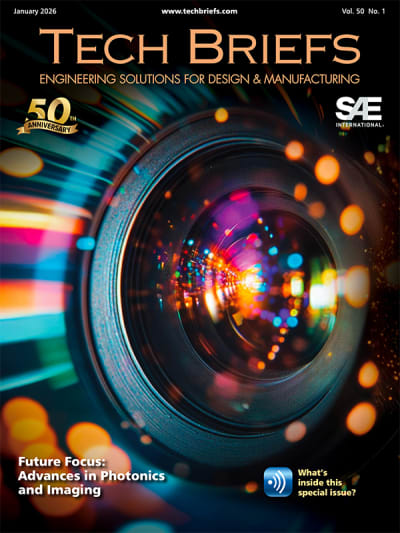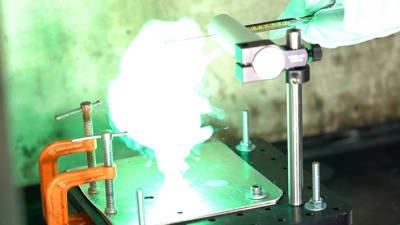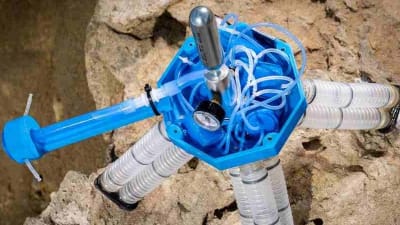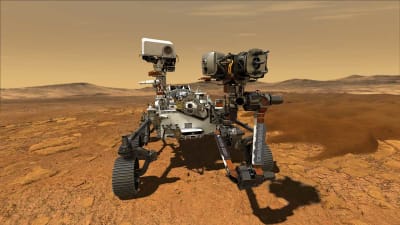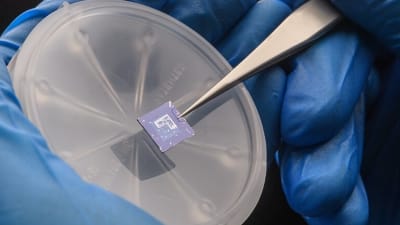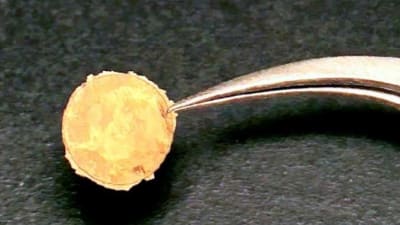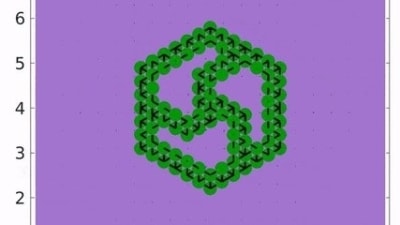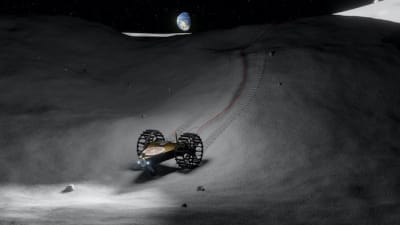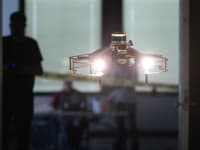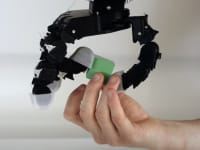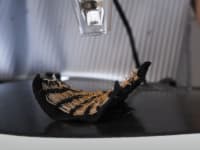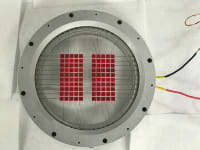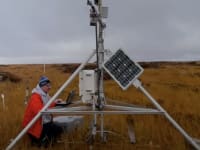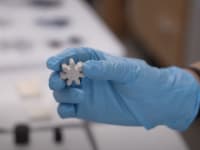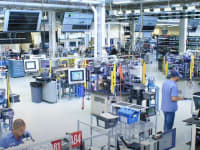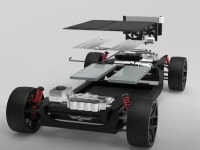61
12,105,170,194,926
-1
1170
30
Question of the Week: Robotics, Automation & Control
Do You See Applications for Electronics-Free Robots?
In our lead INSIDER story today, UCSD researcher Dylan Drotman talked to Tech Briefs about his team’s air-powered robot.
INSIDER: Photonics/Optics
When SpaceX’s Crew Dragon capsule splashed down off the Florida coast in August following its first crewed mission, the two astronauts inside could not exit the capsule immediately....
INSIDER: Energy
The pursuit of fusion as a safe, carbon-free, always-on energy source has intensified in recent years, with a number of organizations pursuing aggressive...
INSIDER: Imaging
IR and UV Optics
Edmund Optics (EO) (Barrington, NJ) has released Zinc Selenide (ZnSe) Wedged Windows, which are ideal for infrared (IR) applications, and TECHSPEC® Calcium Fluoride (CaF2) Aspheric Lenses, which have high...
INSIDER: Sensors/Data Acquisition
The European Space Agency’s (ESA) and NASA’s Solar Orbiter Heliospheric Imager (SoloHI) recently recorded an image showing three of the four inner rocky planets. The...
INSIDER: Robotics, Automation & Control
Perseverance – the largest, most advanced rover NASA has sent to another world – touched down on Mars last week after a 203-day journey traversing 293 million miles. About the size of a car, the...
Blog: Robotics, Automation & Control
To move, a new UCSD robot just needs a constant source of pressurized air.
Question of the Week: Manufacturing & Prototyping
Would You Use the 'LaserFactory?'
A technology from MIT known as the "LaserFactory" integrates 3D printers and laser cutters to fabricate wearables, robots, and electronics components like sensors and actuators.
Blog: Robotics, Automation & Control
Dr. Axel Krieger from Johns Hopkins University explains how he is getting a robotic system ready for the fight against COVID-19.
Blog: Mechanical & Fluid Systems
Darin Skelly spoke with Tech Briefs about how he felt during the landing of the Perseverance rover, and what he's most looking forward to finding out about Mars.
Blog: Robotics, Automation & Control
What can you do with a credit card sized pump? "Power clothing!" Prof. Jonathan Rossiter tells Tech Briefs?
Blog: Robotics, Automation & Control
Watch as the Perseverance rover lands on Mars.
Question of the Week: Robotics, Automation & Control
Do You Like the Idea of Robots in the Hospital?
Our brand-new episode of Here’s an Idea highlighted a growing use of robots and robotic arms in the hospital. While technologies like “Tommy” and “Tiago” are helpful in completing tedious, repetitive tasks, the robots do lack a certain human touch, says our editor Sherrie Trigg.
Blog: Manufacturing & Prototyping
Design engineers should be cautious in how they design and deploy mixed-reality technologies, says an industry expert.
Question of the Week: Robotics, Automation & Control
Will ‘Bubble Robots’ Catch On?
A group of researchers are using a surprising ingredient in their robot design: Bubbles. (Watch the demo on Tech Briefs TV.)
Blog: Manufacturing & Prototyping
Should you replace your big coordinate measurement machine with laser radar? Or should you just add a laser scanner with a CMM? A reader asks our expert.
INSIDER: Medical
Scientists around the world are working to develop electronic skins that attach to the body and monitor vital signs. These E-skins need to be comfortable, breathable, and flexible for everyday...
INSIDER: Nanotechnology
Light-emitting diodes — LEDs — are important in many more applications than just illumination. These light sources are useful in microelectronics too. Smartphones, for example, can...
INSIDER: Design
A hacker can reproduce a circuit on a chip by discovering what key transistors are doing in a circuit — but not if the transistor “type” is...
INSIDER: Sensors/Data Acquisition
A research team from National University of Singapore (NUS) has taken a first step towards improving the safety and precision of industrial robotic arms by developing a new range of...
Question of the Week: Robotics, Automation & Control
Can 'Bluebots' Preserve Coral Reefs?
A team of Harvard researchers have developed fish-inspired robots that can synchronize their movements like a real school of fish, without any external control. (Watch the robots in action on Tech Briefs TV.)
Blog: Materials
The hard “coin,” could be used to make super-strength metal coatings or larger industrial components.
Blog: Green Design & Manufacturing
The "polymer of squares” could one day enable the use of plastic products many times over.
INSIDER: Mechanical & Fluid Systems
University of Pittsburgh researchers have utilized a catalytic reaction that causes a two-dimensional, chemically coated sheet to spontaneously “morph” into a three-dimensional gear.
INSIDER: Motion Control
The Tethered permanently shadowed Region EXplorer (T-REX) rover, designed and built by a team of Michigan Technological University students – is designed to provide reliable power and data to other...
Blog: Transportation
If you're concerned that electric vehicles don't have the reliability to get you where you need to go, Penn State engineers are working on a battery for...
Question of the Week: Test & Measurement
Will We Make Vibration-Free Helicopters?
A Tech Briefs TV video features a test technology from the Army that’s informally known as a “Shaker.” The Multi-Degree of Freedom (MDOF) system will study the causes of vibrations in a helicopter’s many components and subcomponents. The Army researchers hope to use the conclusions of their study to...
Blog: Photonics/Optics
Inspired by the squid's color-changing chromatophore, Rutgers engineers set out to create an artificial one.
Question of the Week: Transportation
Has the Vehicle Become Your “Second Space?”
"Honestly, the car has become an office for some people just so they can get away from the noise of their house," said Carla Bailo at CES 2021 last week. "The sound [in the car] is great, and you can connect from anywhere."
Top Stories
Blog: Manufacturing & Prototyping
2025 Holiday Gift Guide for Engineers: Tech, Tools, and Gadgets
INSIDER: Research Lab
Scientists Create Superconducting Semiconductor Material
Blog: Software
Quiz: Materials
Blog: Aerospace
Tech Briefs Wrapped 2025: Top 10 Technology Stories
Blog: Manufacturing & Prototyping
Webcasts
 Upcoming Webinars: AR/AI
Upcoming Webinars: AR/AI
The Real Impact of AR and AI in the Industrial Equipment Industry
 Upcoming Webinars: Motion Control
Upcoming Webinars: Motion Control
Next-Generation Linear and Rotary Stages: When Ultra Precision...
 Upcoming Webinars: Energy
Upcoming Webinars: Energy
Hydrogen Engines Are Heating Up for Heavy Duty
 Podcasts: Medical
Podcasts: Medical
How Wearables Are Enhancing Smart Drug Delivery
 Podcasts: Power
Podcasts: Power
SAE Automotive Podcast: Solid-State Batteries
